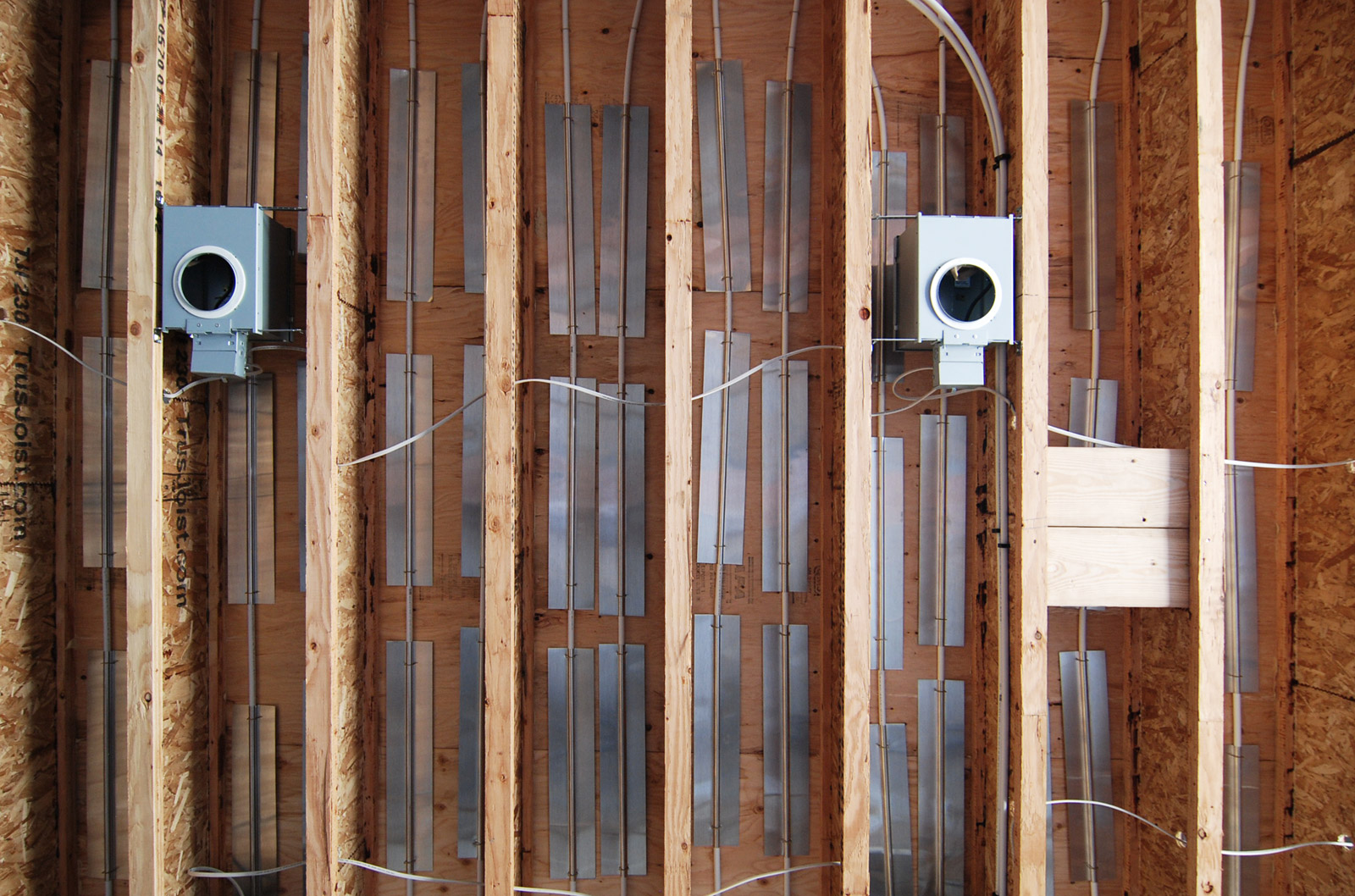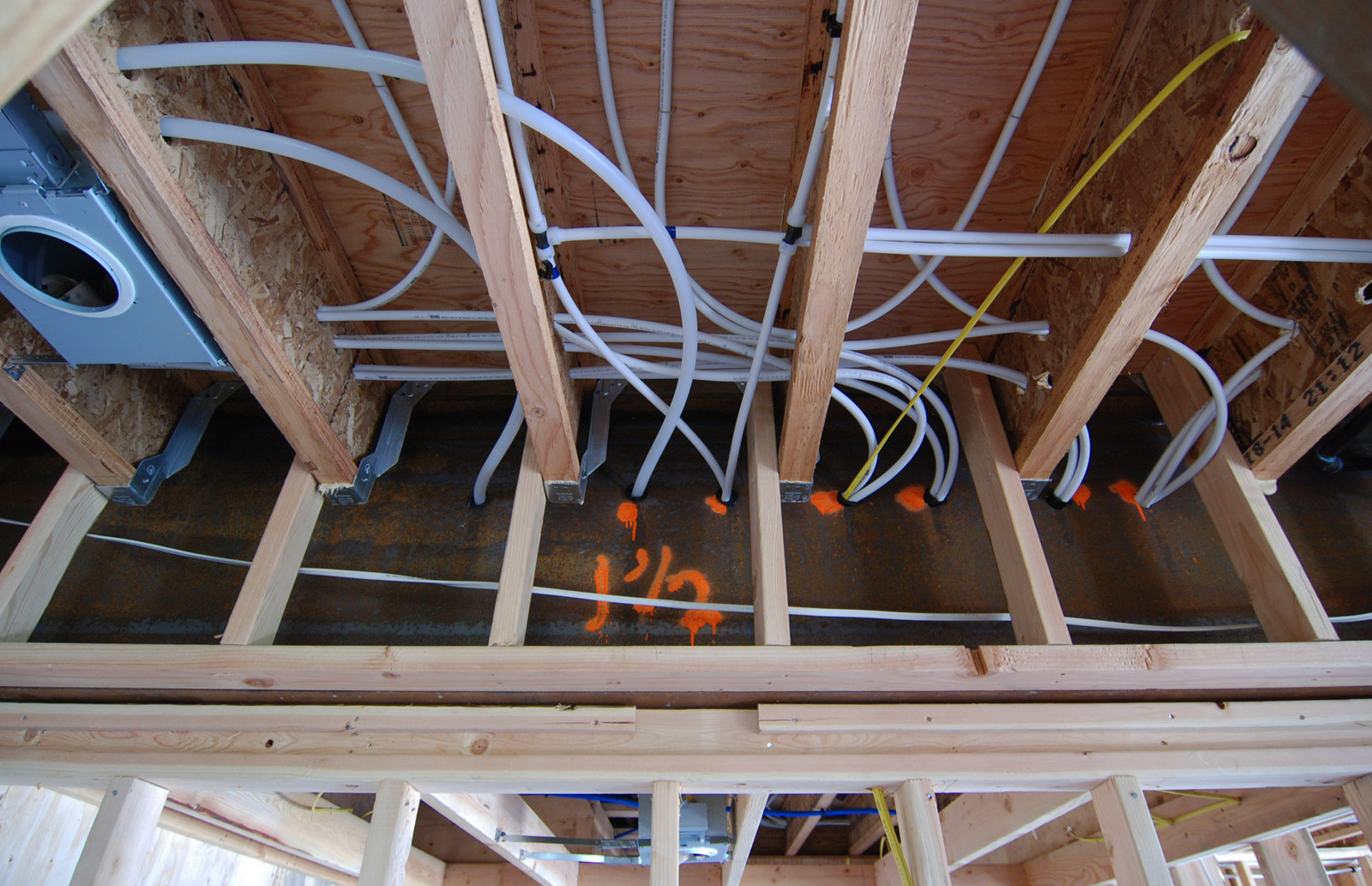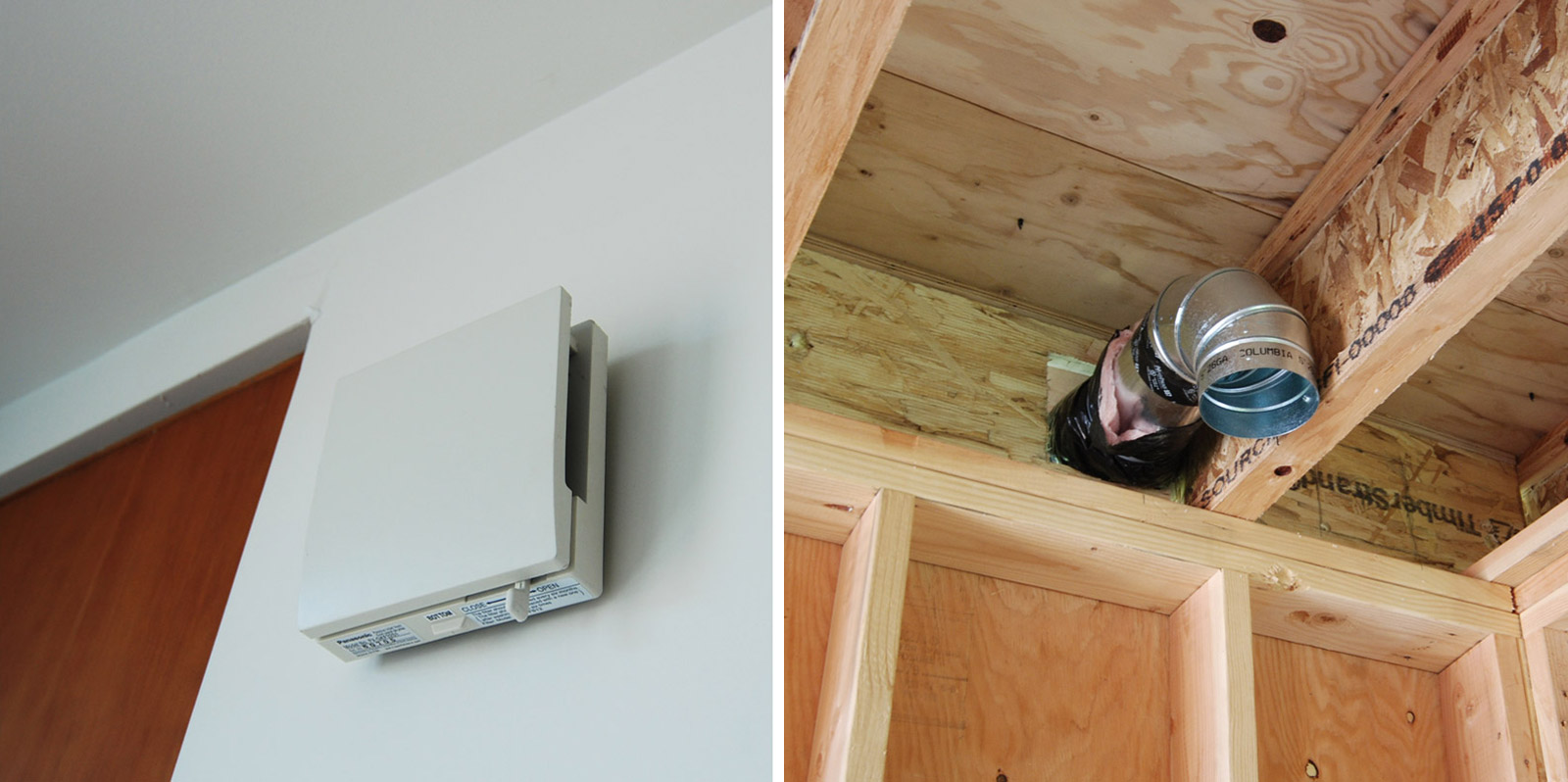
[All photos by BUILD LLC]
When designing a new residence, one of the first design decisions we review with the homeowners is the heating system. In-floor radiant heat has come a long way in the last couple of decades and it should at least be a consideration for a home’s heat system. The technology of in-floor radiant heat is an evolution from the traditional free-standing radiators (like in turn of the century homes), in that hot water is circulated through the house via pipes that transfer the heat to objects, subsequently heating the interiors. That’s about where the similarities end, though, and in-floor radiant heat is much more effective and efficient.
For typical wood frame house construction, modern in-floor radiant heat uses a network of 3/8” or 1/2” diameter flexible tubes located within the floor system that wind through each room of the house. These tubes are equally spaced and are attached to the underside of the floor sheathing. This system can be further engineered to include heat transfer plates (for a more even distribution of heat) or tighter tube spacing at areas that may require additional heat (like around large floor-to-ceiling windows). This “staple up” method, is a cost-effective option that keeps the construction relatively simple and allows access to the tubes later on if necessary (albeit it requires the removal of drywall at the lid below). The example below shows an underfloor attachment with 2 radiant tubes per joist bay and aluminum distribution plates.

Alternatively, the radiant tubes can be located above the floor sheathing, embedded in a thin layer of lightweight concrete or gyp-crete. While this method provides a more consistent material to radiate the heat, it’s more costly and difficult to install. The tubes are also buried away, prohibiting future access. Floor finish can be removed and gyp-crete chipped away to get at a problem area (but that can be painful).
Lastly, radiant tubing can be located in cast-in-place concrete, assuming this is part of the project. The design and construction team needs to take a certain level of care to ensure that the slab has proper insulation below, as well as proper thermal breaks at slab edges (to keep the system efficient). We’ve also found that additional care must be taken to properly zone the systems and use the appropriate controls where a project includes tubing in cast-in-place concrete in one section, and tubing in framed applications elsewhere (since the thermal mass and responsiveness of each floor system and its related volume will heat at different rates).
An important part of a radiant heat system is its ability to work well with the additional systems in the home. Competing for similar space is the electrical system, and the photo above demonstrates the radiant heat system and recessed can-light network playing well together. Maintaining continuity with the radiant tubes is critical to the heating system, and structural requirements should also be taken into account. Deliberate (and planned) holes have been machined into the massive steel beam below, allowing passage of the radiant heat tubes from one room to another.

The radiant tube runs are grouped together and organized by zones (which could be floors or collections of rooms). Each of these zones begins and ends at a manifold which sits at the base of a dedicated wall. This manifold takes the hot water supply line and delivers heated water to the tubes according to the thermostat setting of the zone. The manifold is accessible behind a metal grill and often allows additional calibration of the system.

The lines delivering hot water to the manifolds are supplied by a tankless hot water heater, a combination tankless heating system with small holding tank (for larger applications), or a full-on boiler (for very large applications). Any of these systems, along with the appropriate connections and safety mechanisms, should have a dedicated room in the house. The example below uses a tankless hot water heater and a small hot water tank to feed the in-floor radiant heat system. A blank wall to mount the equipment and connections allows for a straight-forward install and keeps the plumber happy, as well as allows other related vendors (gas piping, electrician) to take care of their parts of the system.

In-floor radiant heat involves additional requirements that aren’t part of the immediate system, but necessary for a healthy system nonetheless. Because in-floor radiant heat eliminates ducting within the home, supplementary systems are required to maintain the circulation of fresh air within the home. In-floor radiant heat is typically supplemented with passive air inlets (PAIs) or windows with built-in passive venting at certain rooms within the structure. Via an adjustable aperture, these window vents or PAIs allow the passage of air from inside to outside, or vice versa, keeping a flow of fresh air and maintaining an appropriate air pressure inside the home. The example below indicates a wall mount version of the PAI on the left and a ceiling mount PAI on the right (still in construction)

With the function of the system explained, let’s get to some of the important characteristics of in-floor radiant heat.
+ The quality and efficiency of the tankless heater, hot water heater, or boiler is of prime importance. With the advances in appliances, this is a great item for homeowners to bump up the allowance on. If you’re really a go-getter, table 406.2 of the Washington State Energy Code lists some important criteria for energy efficient heating systems.
+ Control of zones is an important feature as different portions of a home may have different needs. For instance an upper floor with abundant direct sunlight collects more solar gain than a lower north-facing floor. Separating the home into multiple zones helps deal with different environmental conditions and allows better calibration of the overall heating system. The manifolds, which have a series of valves controlling the amount of hot water being delivered to each loop, can allow for an additional, relatively simple way to fine-tune the heat within certain areas. For example, a bedroom can be turned down to restrict heat flow while a bathroom can be opened full to maximize heat going to a tile floor (and the bare feet on it).
+ Thermostat locations are key and they should be located in temperature stable areas within the home. Keep thermostats out of the kitchen, away from the fireplace, and out of direct sunlight, but as central as possible within the zone it controls.
Now that we’ve reviewed a modern in-floor radiant heat system, and covered some of the important characteristics, let’s look at the pluses and minuses of the system with relation to other methods of heating a home.
ADVANTAGES OF IN-FLOOR RADIANT HEAT SYSTEMS:
+ The heat is gradual and consistent (no sudden moves!)
+ It feels great on bare feet
+ It eliminates the need for ducting
+ It eliminates the drop soffits and lowered ceilings that so often accompany ducting
+ It eliminates some of the draftiness common with ducted forced-air systems
+ The system is flexible and can be routed around other systems within the home (electrical, data, etc)
DISADVANTAGES OF IN-FLOOR RADIANT HEAT SYSTEMS:
– It doesn’t react quickly. If you want an immediate temperature response to outside whether conditions, in-floor radiant heat is not the way to go.
– Cooling is not possible with radiant in-floor heat (there are some methods to supplement radiant in-floor heat with a split system for cooling, but that’s another post.)
– The radiant tubes require a bit of caution against damage. Nails, staples and other fasteners will puncture the tubes and create leaks. You have to be careful before simply nailing that door threshold down to the floor.
– The manifolds take up a bit of wall space and it’s worth locating them so that the metal grill cover plates are inconspicuous.
Whether or not radiant heat is the right solution for a home depends on a home owner’s reaction to the benefits and drawbacks above. We’re big fans of in-floor radiant heat and we design it into many of our projects around the Pacific Northwest. We’ve found it to be comfortable, cost-effective, and well integrated with the architecture of a modern home.
Cheers from Team BUILD





